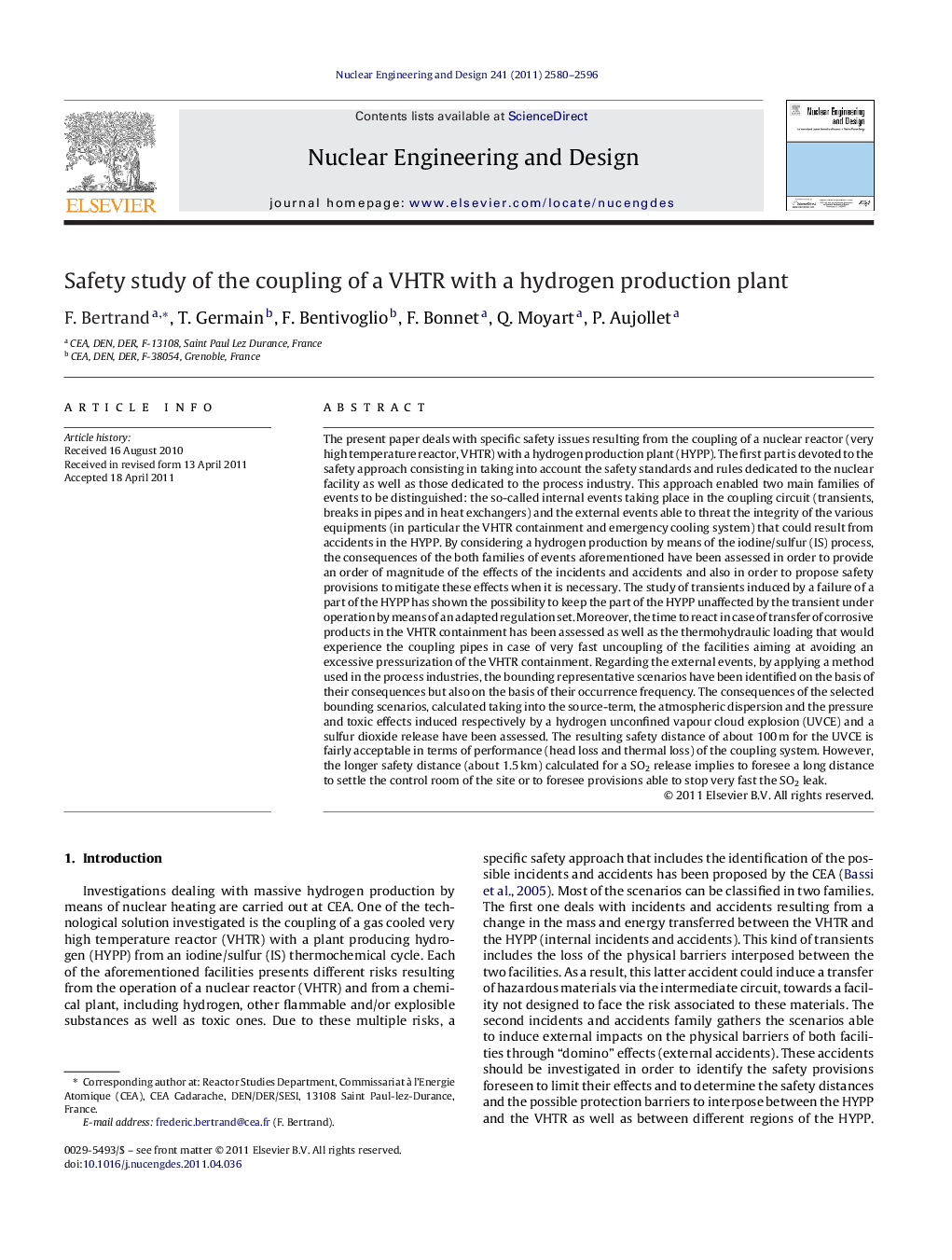| کد مقاله | کد نشریه | سال انتشار | مقاله انگلیسی | نسخه تمام متن |
|---|---|---|---|---|
| 297560 | 511761 | 2011 | 17 صفحه PDF | دانلود رایگان |

The present paper deals with specific safety issues resulting from the coupling of a nuclear reactor (very high temperature reactor, VHTR) with a hydrogen production plant (HYPP). The first part is devoted to the safety approach consisting in taking into account the safety standards and rules dedicated to the nuclear facility as well as those dedicated to the process industry. This approach enabled two main families of events to be distinguished: the so-called internal events taking place in the coupling circuit (transients, breaks in pipes and in heat exchangers) and the external events able to threat the integrity of the various equipments (in particular the VHTR containment and emergency cooling system) that could result from accidents in the HYPP. By considering a hydrogen production by means of the iodine/sulfur (IS) process, the consequences of the both families of events aforementioned have been assessed in order to provide an order of magnitude of the effects of the incidents and accidents and also in order to propose safety provisions to mitigate these effects when it is necessary. The study of transients induced by a failure of a part of the HYPP has shown the possibility to keep the part of the HYPP unaffected by the transient under operation by means of an adapted regulation set. Moreover, the time to react in case of transfer of corrosive products in the VHTR containment has been assessed as well as the thermohydraulic loading that would experience the coupling pipes in case of very fast uncoupling of the facilities aiming at avoiding an excessive pressurization of the VHTR containment. Regarding the external events, by applying a method used in the process industries, the bounding representative scenarios have been identified on the basis of their consequences but also on the basis of their occurrence frequency. The consequences of the selected bounding scenarios, calculated taking into the source-term, the atmospheric dispersion and the pressure and toxic effects induced respectively by a hydrogen unconfined vapour cloud explosion (UVCE) and a sulfur dioxide release have been assessed. The resulting safety distance of about 100 m for the UVCE is fairly acceptable in terms of performance (head loss and thermal loss) of the coupling system. However, the longer safety distance (about 1.5 km) calculated for a SO2 release implies to foresee a long distance to settle the control room of the site or to foresee provisions able to stop very fast the SO2 leak.
► The paper deals with safety issues of the coupling of a VHTR with a H2 production plant.
► Internal incidents/accidents in the coupling system have been studied with the CATHARE2 code.
► Transient studies have indicated a substantial grace delay when the VHTR faces the H2 plant disturbances.
► Hydrogen release and combustion leads to safety distances of about 100 m.
► No showstopper has been put in evidence regarding the feasibility of the VHTR/H2 plant coupling.
Journal: Nuclear Engineering and Design - Volume 241, Issue 7, July 2011, Pages 2580–2596